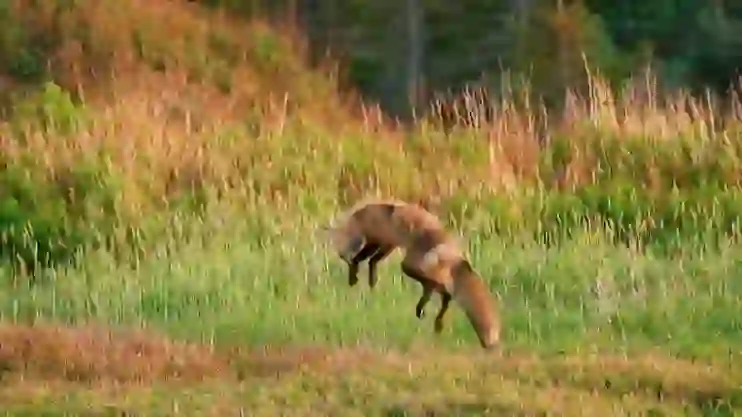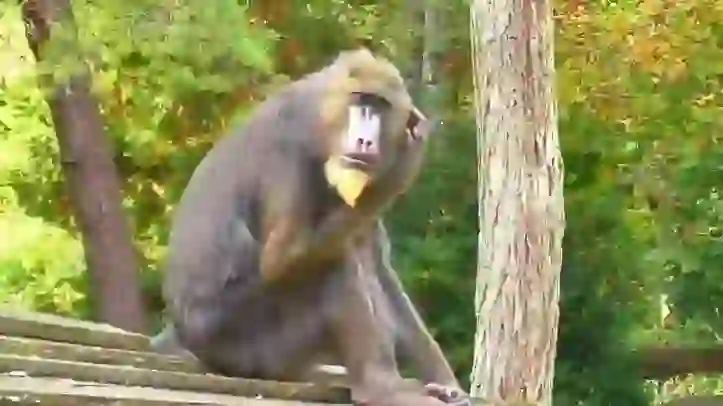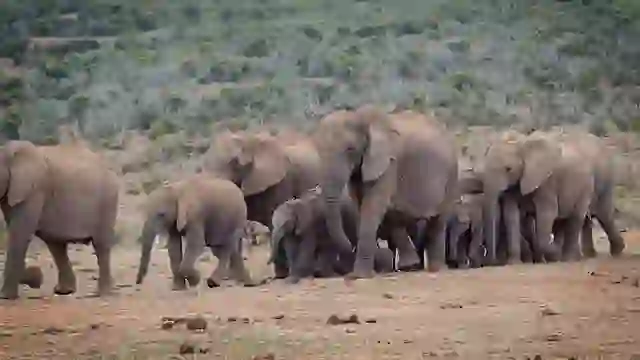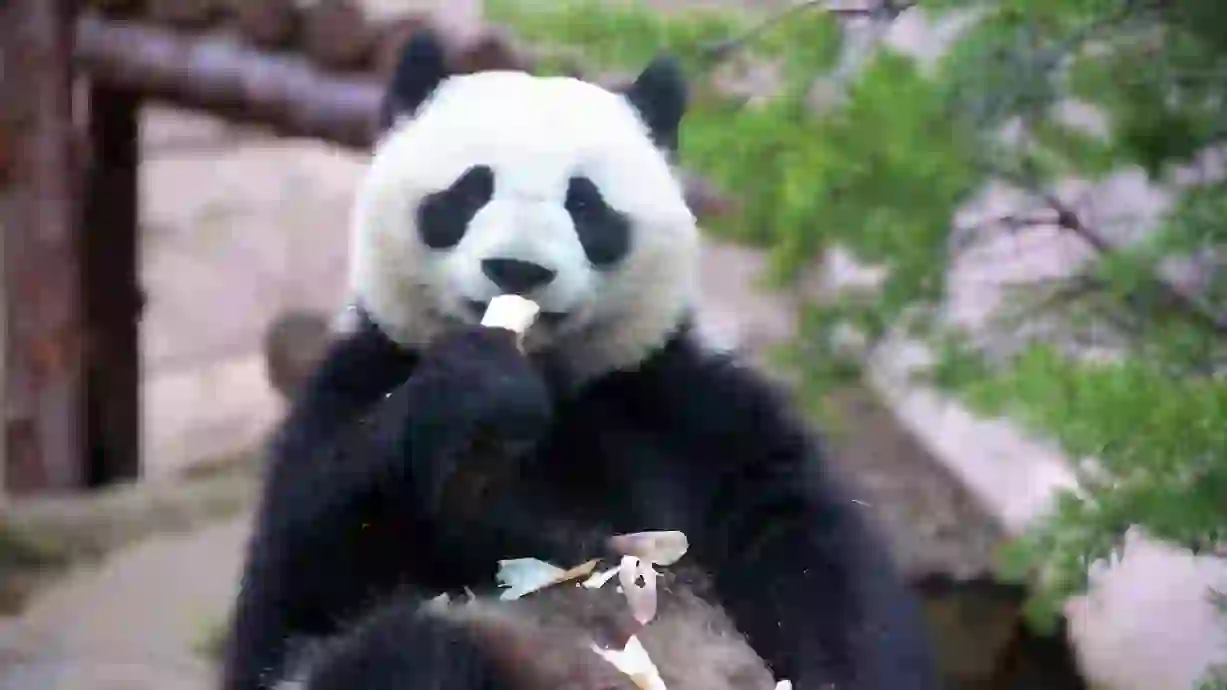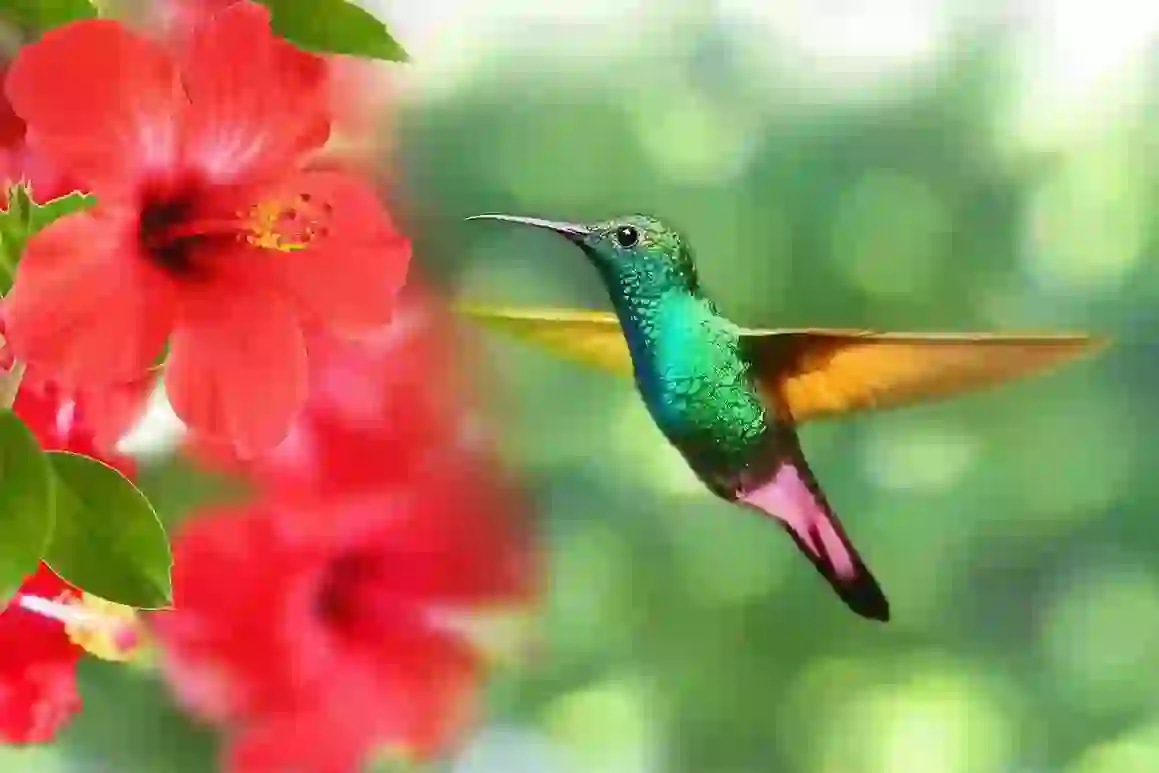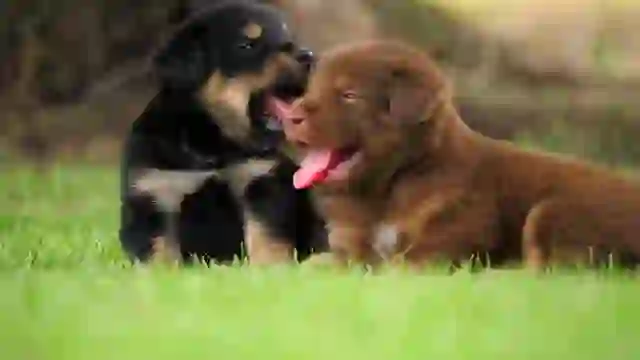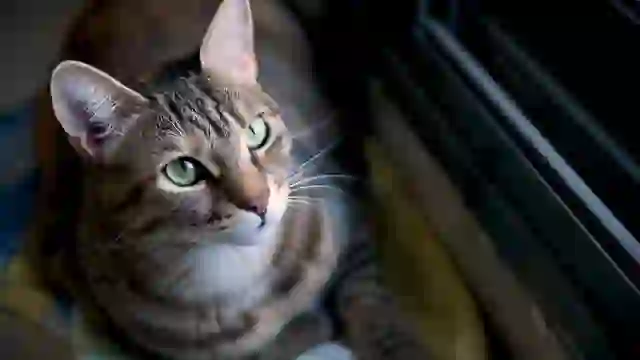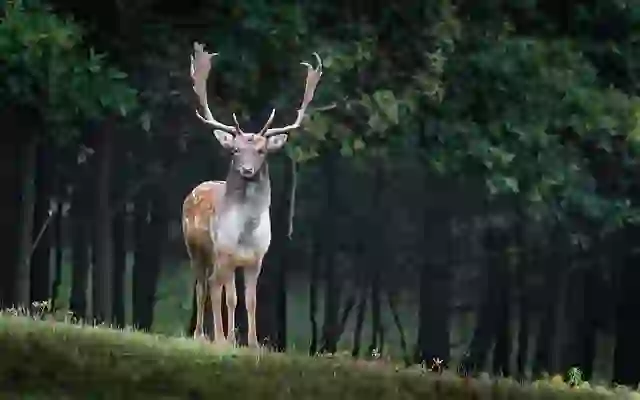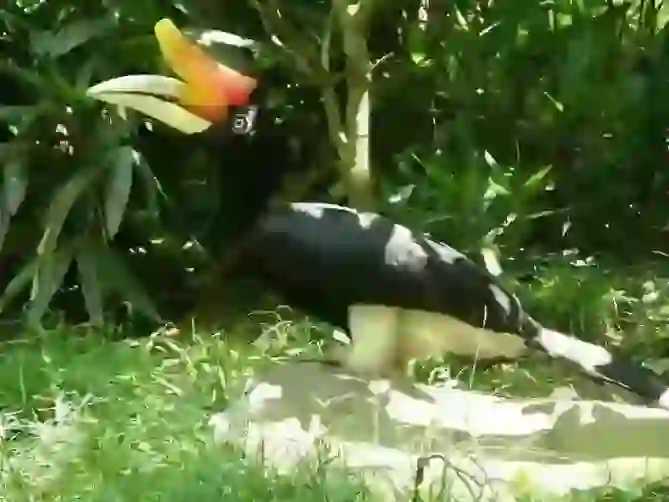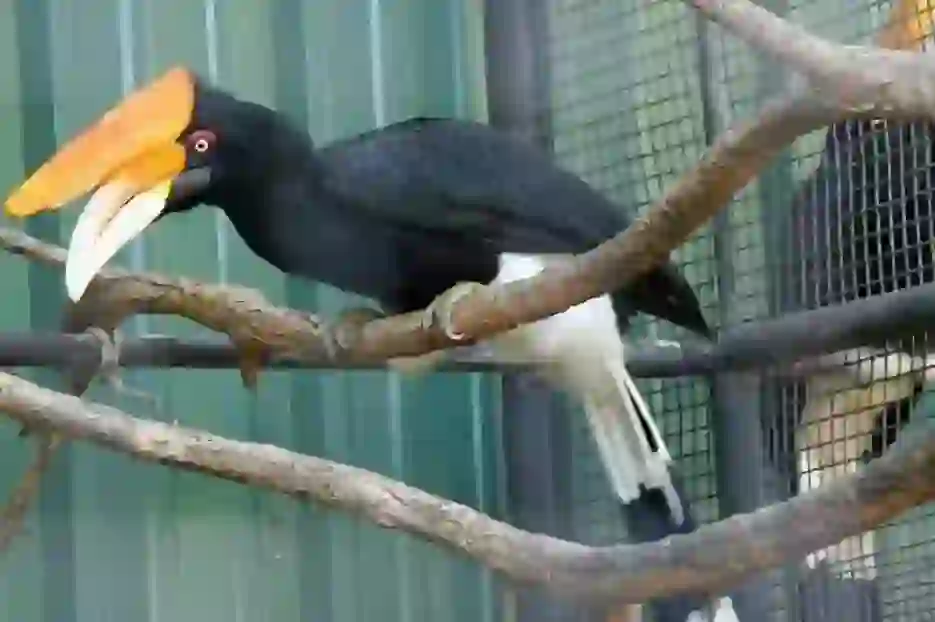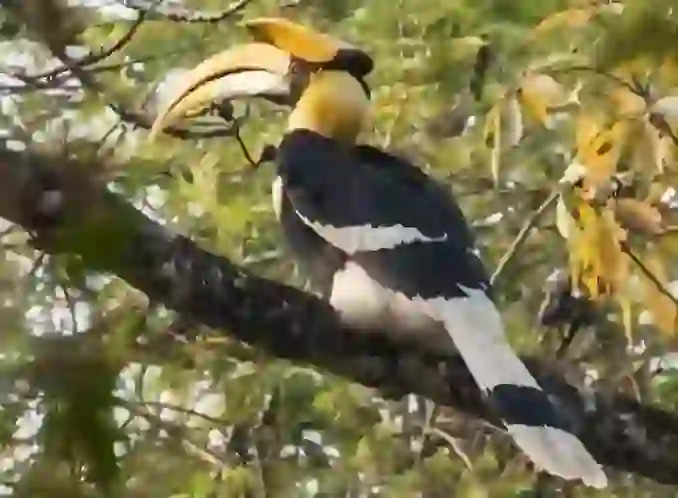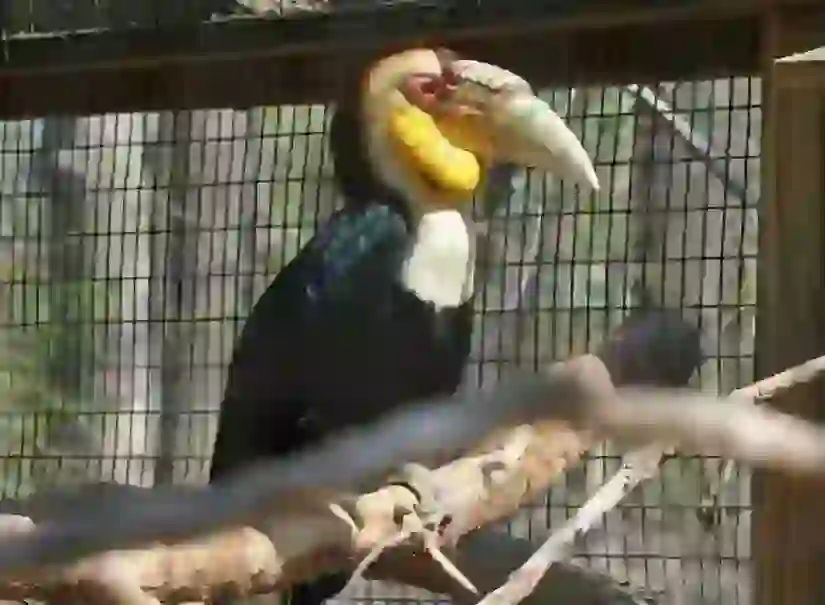
Rhinoceros Hornbill
Rhinoceros Hornbill
Rhinoceros Hornbill
Do you know the strange bird called a rhinoceros hornbill that has a horn-like thing growing on its beak? The rhinoceros hornbill is a bird that inhabits countries such as Thailand and Malaysia and is characterized by its large body and a horn-like protrusion growing on its beak. The protrusion called a casque is very large, and many people say that once they see it, they cannot forget it. Let’s take a look at the life of the mysterious bird, the rhinoceros hornbill, and its characteristics and secrets in this article!
Rhinoceros Hornbill Basic Infomation
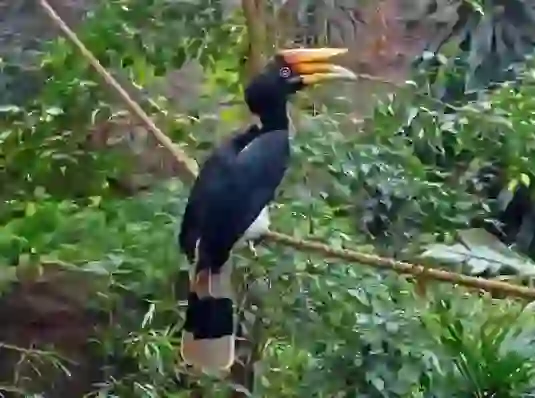
Aves-Bucerotiformes-Bucerotidae.
Length:90~125cm weight:1~3kg.
The rhinoceros hornbill is a large bird that inhabits southern Thailand, Malaysia, Sumatra, Java, Borneo, Kalimantan and other areas. The body is black, the beak and horn-like protrusion are yellow to orange, and the eyes are orange for males and white for females.
The rhinoceros hornbill’s most distinctive feature is the horn-like protrusion called a "casque" on top of its beak, which grows on both males and females. The casque is almost the same color and shape as the beak, so depending on how you look at it, it may appear that there are three beaks.
The rhinoceros hornbill breeds from late January to late May, and during the breeding season, it lays eggs and raises chicks in large tree cavities.
The female lays one egg per clutch, which hatches after about 40 days of incubation, and the chick leaves the nest after about 80 days of hatching. Note that the casque does not grow on newborn chicks, but grows as the body grows.
Rhinoceros Hornbill Q&A

Where does rhinoceros hornbill get its name?
In English, it is called "rhinoceros hornbill", but in fact, in the case of Japanese, it is named "saichou". This time, we will introduce the origin of the saitchou in Japanese and the origin of the rhinoceros hornbill in English.
First of all, it is the origin of the name "saichou" in Japanese, but it is said that the name "saichou" was given because the horn-like casque growing on the head resembles the animal "sai".
※Sai means rhinoceros in Japanese.
Next, the name "rhinoceros hornbill" in English is actually a little similar to the origin of Japanese. Wasn't it named in connection with rhinoceros, an animal called rhinoceros? It is considered to be.
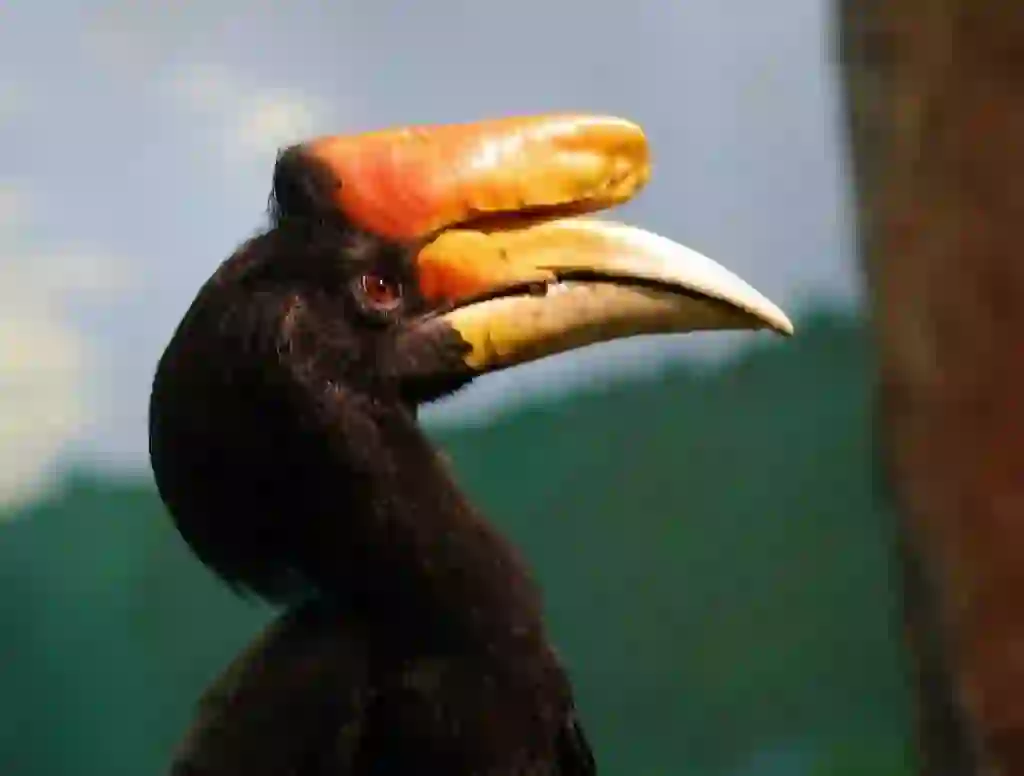
Why do rhinoceros hornbills live there?
The rhinoceros hornbill inhabits tropical rainforests such as southern Thailand, Malaysia, Sumatra, Java, Borneo, and Kalimantan.
It is not clear why the rhinoceros hornbill inhabits these areas. However, these areas have many tropical rainforests and many fruits and insects that are food for the rhinoceros hornbill. Therefore, it is speculated that these areas were a comfortable environment for the rhinoceros hornbill.
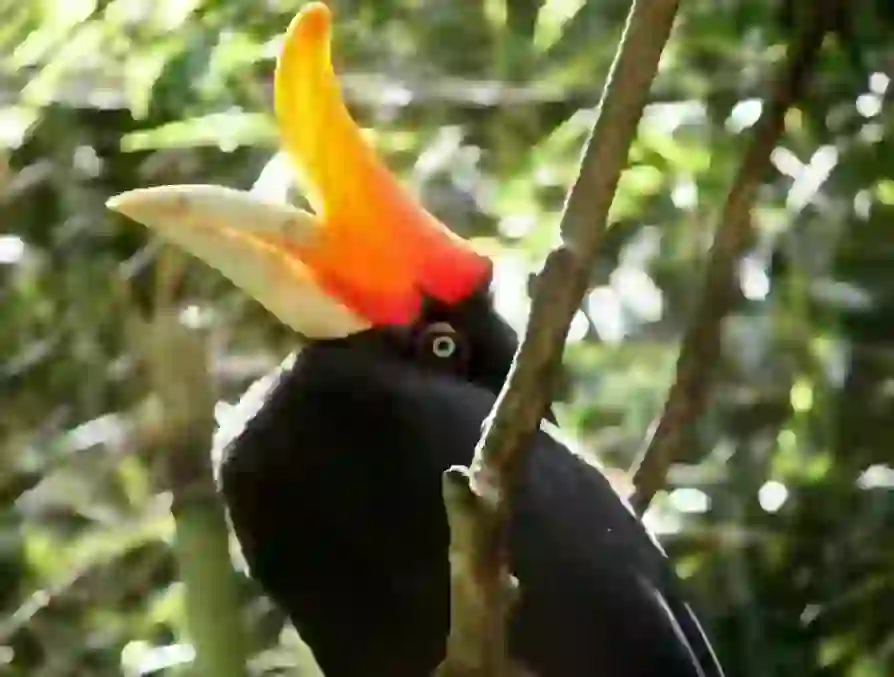
What do rhinoceros hornbills eat?
The Rhinoceros hornbill is an omnivorous animal that eats plant-based foods such as figs and nuts and animal-based foods such as insects and small animals.
In zoos, they are fed fruits (apples, grapes, pineapples, oranges, etc.), bread, dog food, egg yolks, etc.
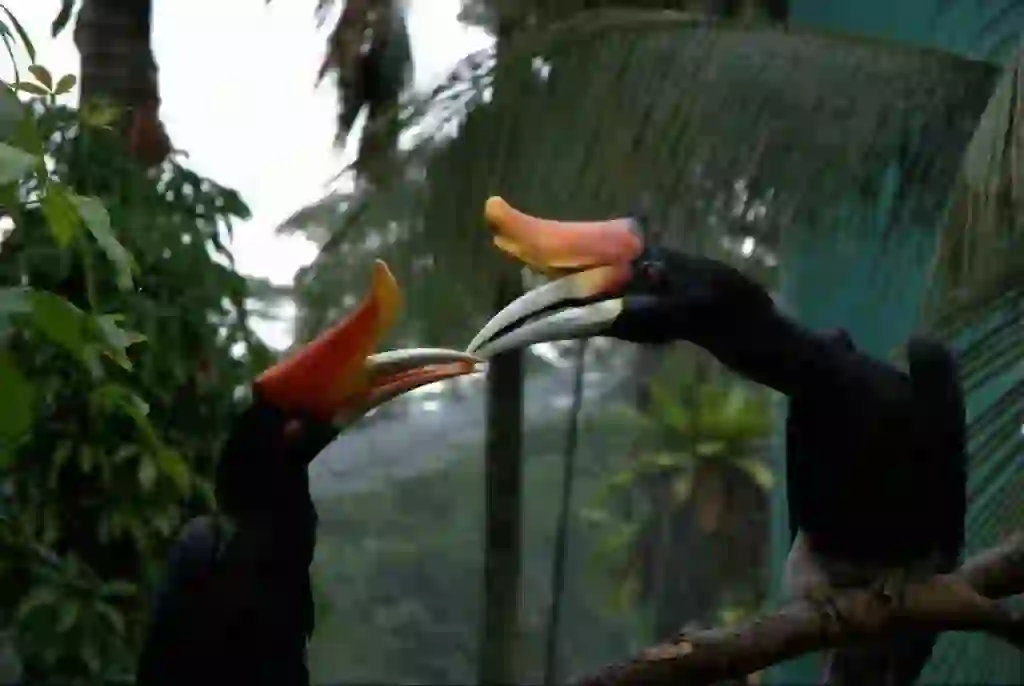
What role does the rhinoceros hornbill casque have?
The rhinoceros hornbill casque looks very heavy, but it is lighter than it looks because the inside is sponge-like. By the way, what role does such a rhinoceros hornbill casque have?
Actually, it is not clear what role the rhinoceros hornbill’s casque plays at this time.
There are various theories such as "used when males fight each other", "used when males appeal to females", and "has a role as a speaker that echoes the voice", but there is no clear answer as to which one is correct or whether all of them are correct.
By the way, the casque is made of a protein called “keratin,” which also makes our nails and hair, so it is light and durable.
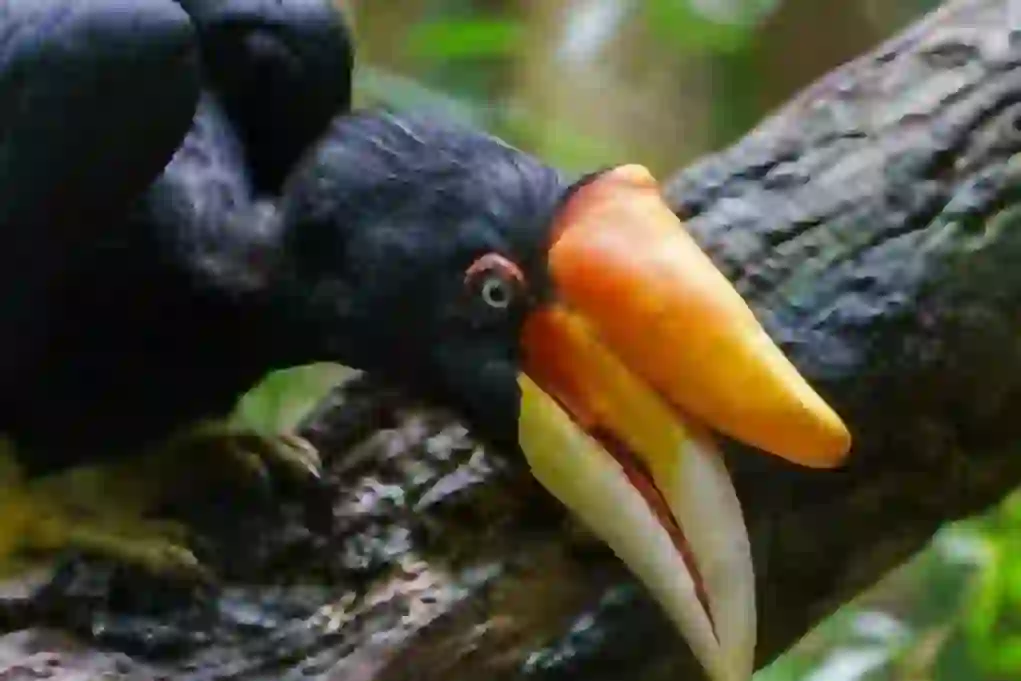
What kind of personality does rhinoceros hornbill have?
The rhinoceros hornbill is said to be cautious and timid.
However, individuals raised in zoos and other places become accustomed to people and sometimes behave in ways such as wanting to be petted by keepers or presenting food.
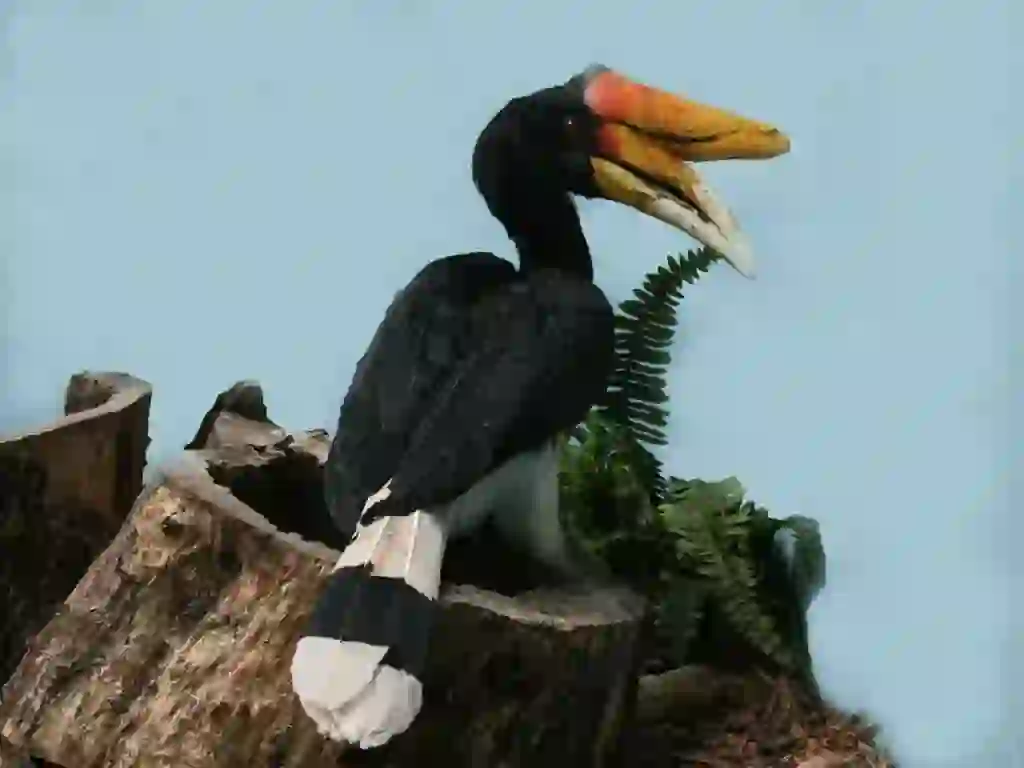
What kind of sound does rhinoceros hornbill make?
The rhinoceros hornbill makes very loud noises such as "kwak" and "kakakaka."
Their cries are sometimes likened to trumpets. In the case of pairs, when the male cries out, the female responds with a cry. This is believed to be because the tropical rainforest where the rhinoceros hornbill lives has very poor visibility, and they use loud cries to confirm each other’s location.
In addition to their cries, it is also known that the sound of their flight is loud. When a rhinoceros hornbill flies overhead, it makes a sound like a steam locomotive running.
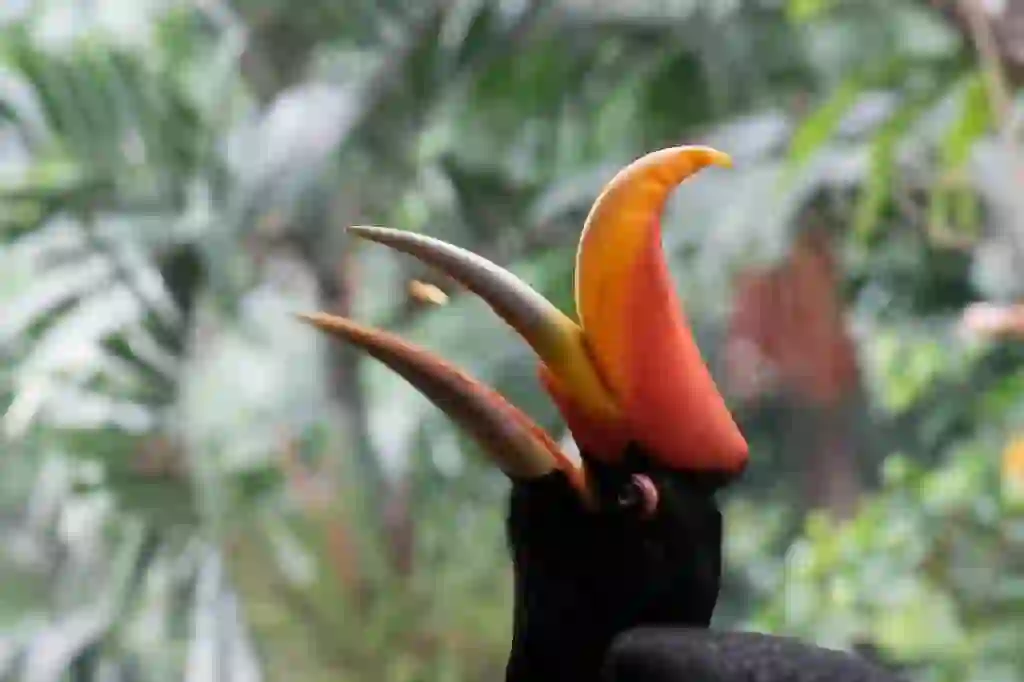
Is it true that rhinoceros hornbills raise their children in interesting ways?
It's true.
During the breeding season, rhinoceros hornbills are known to engage in a behavior called "sealing,"in which they stay in their burrows and seal the entrance with mud and other materials.
There is a small hole at the entrance of the burrow that only the tip of the beak can enter, and the male passes food to the female and chicks inside the burrow through this hole. After the chicks grow to a certain size, the female breaks through the mud and goes outside to help the male bring food to the chicks.
This behavior is known as a strange and interesting habit unique to the rhinoceros hornbill family among birds.
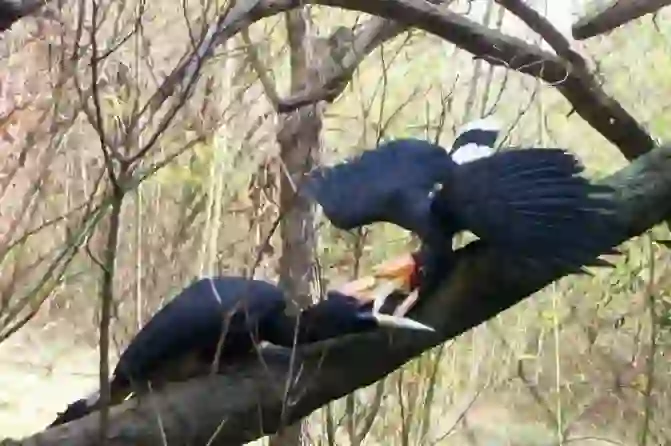
Can rhinoceros hornbills be kept as pets?
When breeding rare animals at home, it is necessary to follow the established laws in some countries. This time, we will introduce whether it is possible to breed rhinoceros hornbills at home in Japan.
As a result of my research, unfortunately I could not find information on people who keep rhinoceros hornbills as pets or pet shops that sell rhinoceros hornbills.
However, it seems that there are pet shops that sell (used to sell) one type of rhinoceros hornbill "crowned hornbill" and one species of abyssinian ground hornbill "southern ground hornbill".
In addition, rhinoceros hornbills were not designated as "specified animals", which are prohibited from being kept as pets in principle.
Based on this, it is probably not impossible to keep rhinoceros hornbills as pets. However, it is not easy for an individual to keep a bird with a loud voice, a large body and a timid character. We strongly recommend that you think of rhinoceros hornbills as wild animals and birds to observe at zoos.
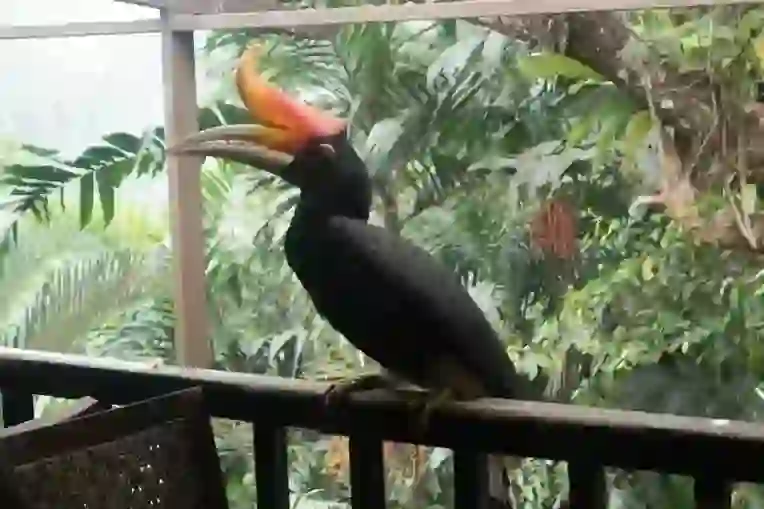
Is there a place where rhinoceros hornbills can be seen in Japan?
Rhinoceros hornbills are bred at the Shizuoka City Nihondaira Zoo in Shizuoka Prefecture and the Saitama Children's Animal Nature Park in Saitama Prefecture.
By the way, the "great hornbill", which is a member of the same hornbill family, with its large cask and beautiful black and white color, is bred at "Saitama Children's Animal Nature Park" and "Tobu Zoological Park" in Saitama Prefecture, and the "wreathed hornbill" with a large throat bag is bred at "Tobu Zoological Park" in Saitama Prefecture and "Fukuoka City Zoo" in Fukuoka Prefecture.
If you want to compare rhinoceros hornbills and great hornbills, please visit "Saitama Children's Nature Park" and "Tobu Zoological Park".
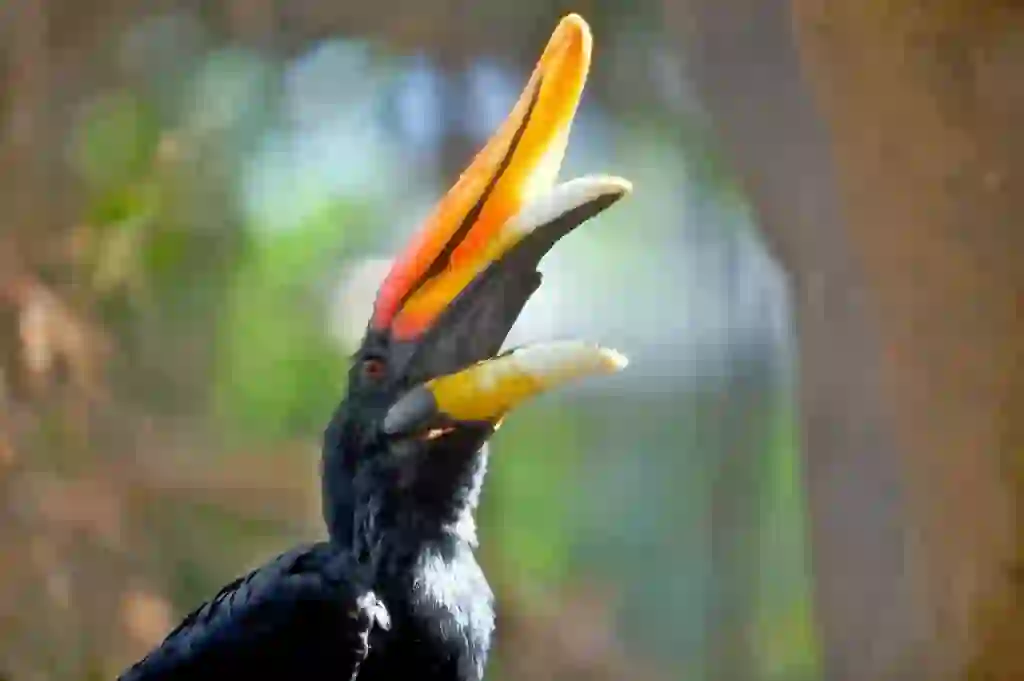
What is the lifespan of rhinoceros hornbills?
The lifespan of the rhinoceros hornbill is said to be about 30 years.
Although they tend to live longer in captivity, it seems to be difficult to breed them.
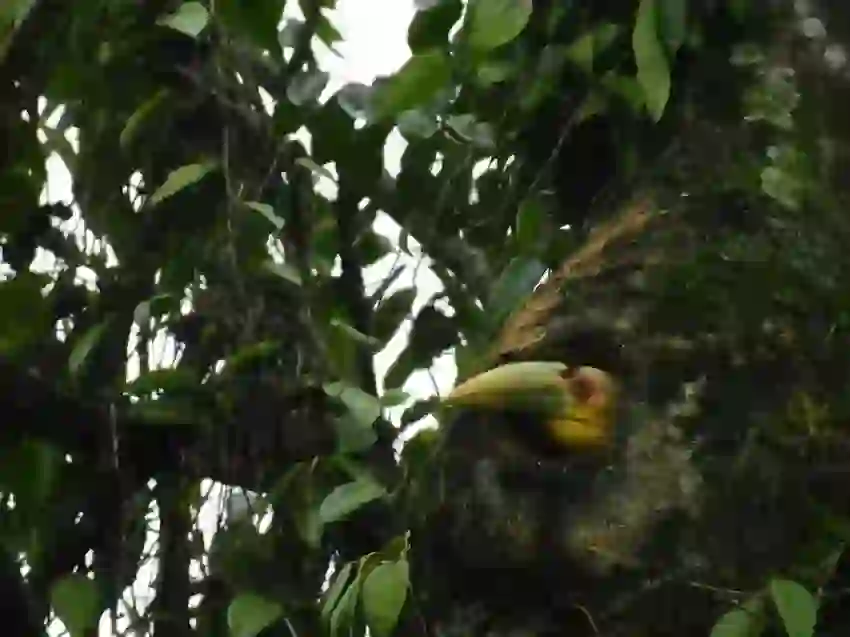
What enemies do rhinoceros hornbills have?
I conducted a survey this time, but I couldn’t find any information about the natural enemies of the rhinoceros hornbill in the wild.
However, especially when they are chicks, they may be eaten by carnivorous animals (large snakes, birds of prey, cats, etc.) that can also move around in trees.
But for rhinoceros hornbills, the biggest enemy is us humans.
Because the tropical rainforest where the rhinoceros hornbill lives is being destroyed by development, the large trees that the rhinoceros hornbill prefers to nest in are decreasing.
In addition, the number of rhinoceros hornbills is decreasing year by year because they are being captured for eating meat, keeping as pets, and using their casques and feathers as decorations.
Such rhinoceros hornbills are classified as "vulnerable species (VU)" on the Red List of the International Union for Conservation of Nature (IUCN), which is a species that is at increasing risk of extinction.
And under the Washington Convention, it is classified as "Annex II" as not necessarily threatened with extinction, but if trade is not regulated, it is threatened.

Would you like to become a part of the 'Animalbook.jp'?
Turn your knowledge into Q&A and share it with the world. ※Publication will be activated after purchase. Let's share information together!
Rhinoceros Hornbill Type of List
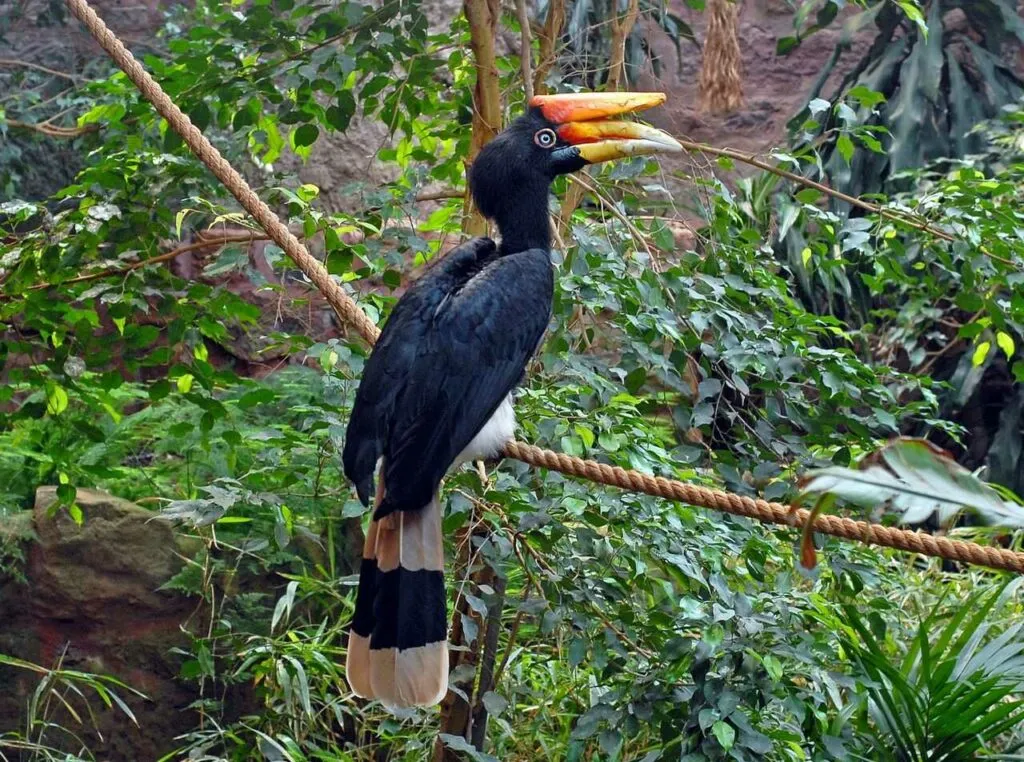
- Rhinoceros Hornbill
Information
Congratulations! You are the first commenter!

Create Your Favorite List!
Rhinoceros Hornbill
Save the animals you love! Build your own list to quickly revisit your favorites later.

Would you like to leave a comment?
※Please note: This is for the purchase of rights to post comments within the article.
Find Your Favorites!
Our shop offers a unique and attractive selection of goods themed around various animals.
Rhinoceros Hornbill References

- 静岡市立日本平動物園「サイチョウ」 https://www.nhdzoo.jp/animals/naka.php?animal_uid=379
- 一般財団法人静岡市動物園協会「静岡市日本平動物園ZOOしずおか82」 http://www.szga.jp/wp-content/uploads/2017/01/a42d1db650b29f351f6513193ce5e64c.pdf
- 公益財団法人えどがわ環境財団「自然動物園ぶろぐ サイチョウの『ナナ』が死亡しました」 https://www.edogawa-kankyozaidan.jp/zoo/blog_detail/703/?locale=ja
- どうぶつのくに.net「vol.3サイチョウ」 http://doubutsu-no-kuni.net/special/episode11/p3.html
Rhinoceros Hornbill Introduction of media used

出典:https://unsplash.com/photos/t-_4hd_34TU
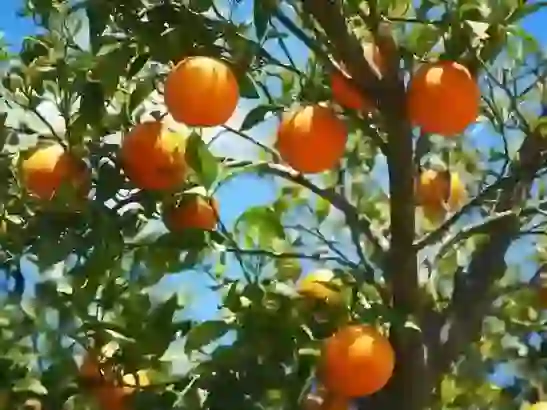
food
出典:https://pixabay.com/images/id-1117628/
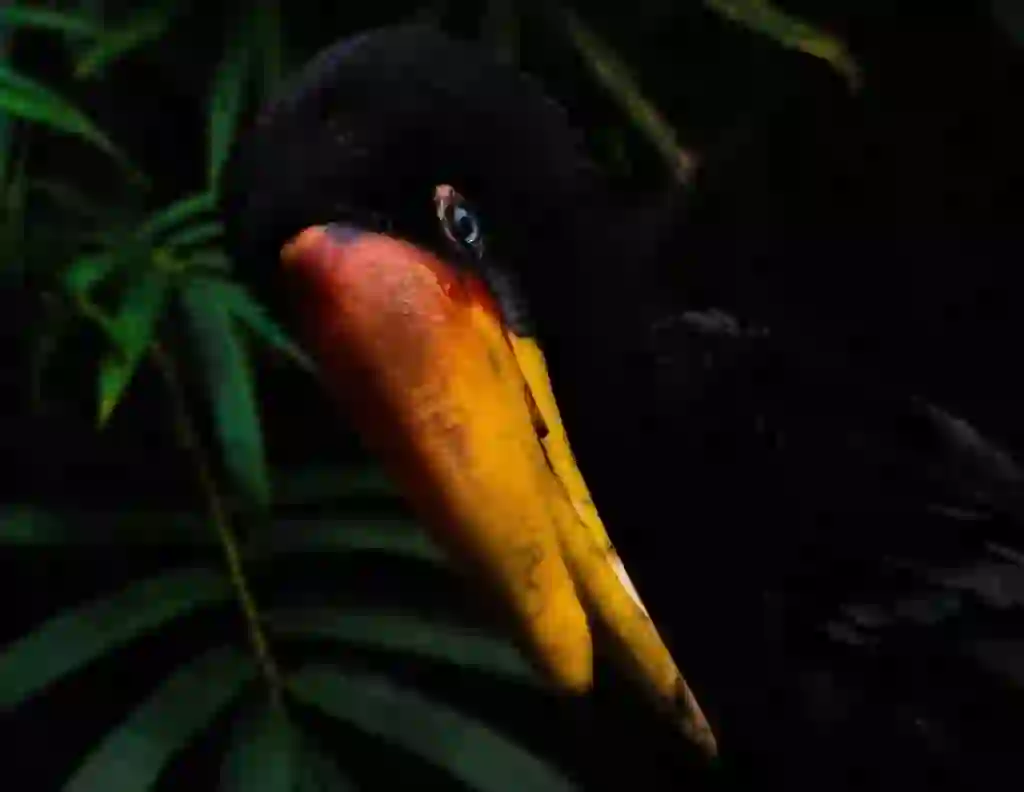
出典:https://unsplash.com/photos/k3X15DQK-Jo
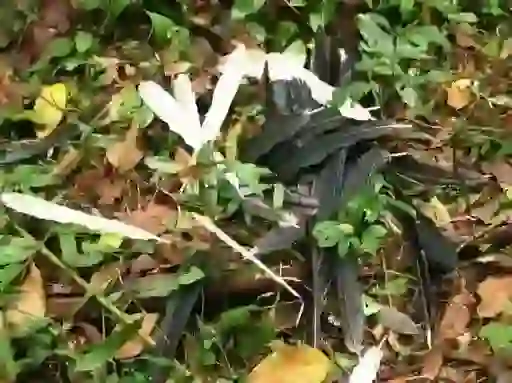
other
出典:https://commons.wikimedia.org/wiki/File:Hunting_wreathed_hornbill_feathers_IMG_8443_05.jpg

Help Enrich Our Animalbook.jp with Your Media!
We are constantly looking to expand and enrich our Animalbook.jp with amazing photos and videos of animals. If you have any media that you'd like to share, please contribute and help us showcase the beauty and diversity of the animal kingdom. Your submissions will be credited and featured in our encyclopedia, reaching a wide audience of animal lovers.



